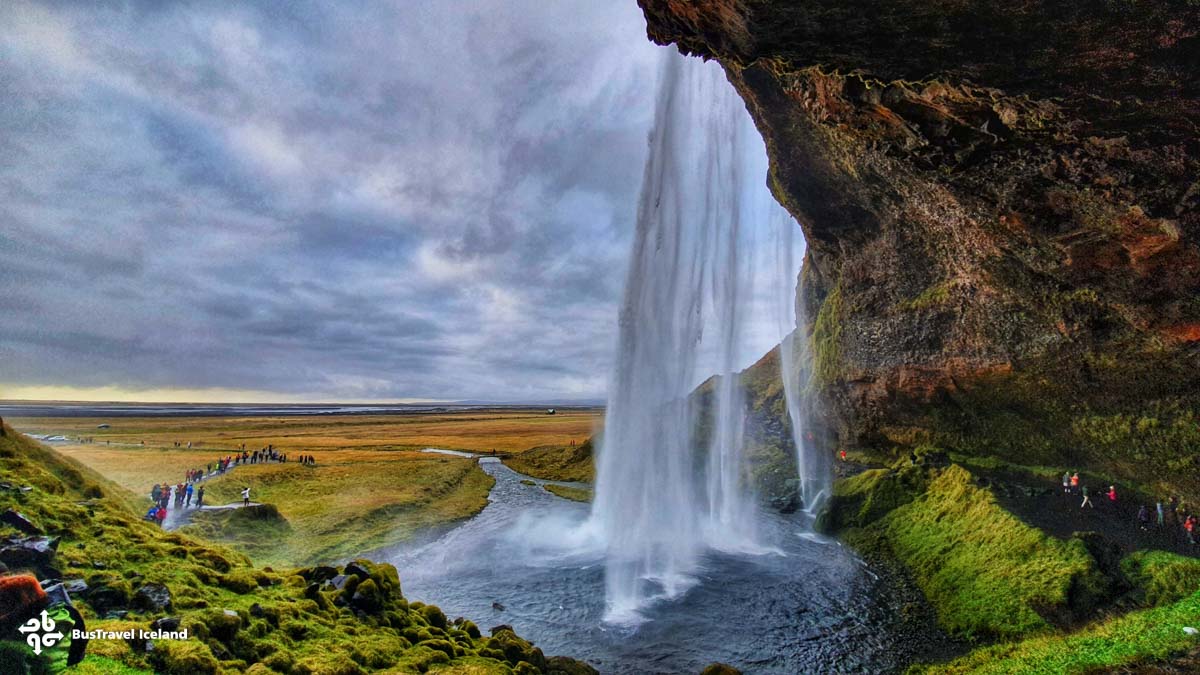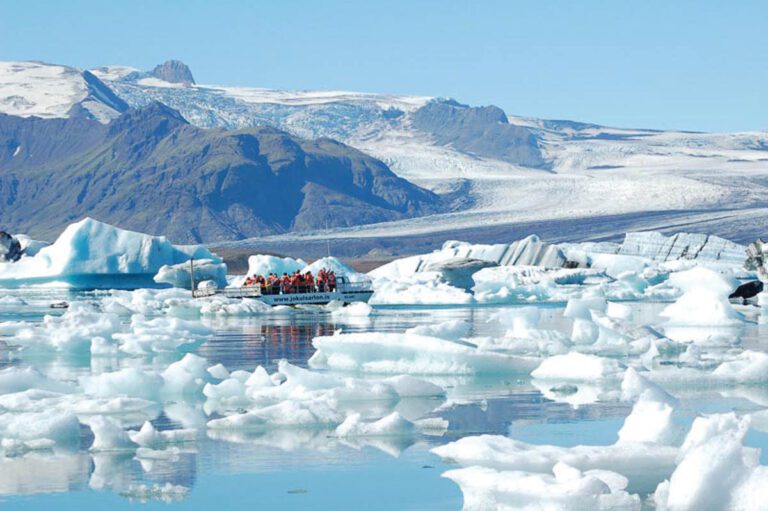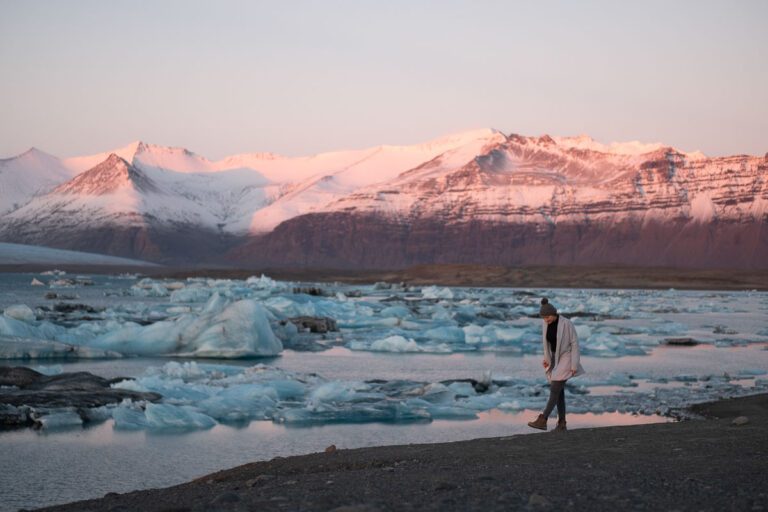Kirkjubaejarklaustur: A Comprehensive Guide to the Historic Village
- South Iceland
- 22 Sep 2023
Kirkjubaejarklaustur is a historic village located in South Iceland en route to Jokulsarlon Glacier Lagoon via the Ring Road. It's also home to numerous waterfalls, basalt columns, lava fields, canyons, and a gateway to Vatnajökull National Park. There is a lot to explore in the area, as well as it's a popular stop on journeys along Iceland's scenic Ring Road.

Where is Kirkjubaejarklaustur Located
Kirkjubæjarklaustur is a historic, charming village located in South Iceland. It’s surrounded by breathtaking landscapes and renowned for its charming history, culture and fascinating natural attractions.
The village lies approximately 250 kilometers to the east of Reykjavik, Iceland’s capital. The drive from Reykjavik to Kirkjubæjarklaustur typically takes around 3 hours, passing through stunning landscapes including the famous black sand beaches near Vik.

What to see Around Kirkjubaejarklaustur
Waterfalls and Landscapes
One of Iceland’s most iconic waterfalls in the Kirkjubaejarklaustur area is Systrafoss, also known as the Sisters’ Falls. Systrafoss consists of two equally beautiful waterfalls cascading side by side down a mountainside. Originating from the tranquil Systravatn lake above, these falls cascade gracefully down the rugged terrain, creating a picturesque scene amidst the lush greenery.

Foss á Síðu, a picturesque waterfall close to the Kirkjubaejarklaustur area in South Iceland, cascades gracefully down a cliff near the Ring Road. Notably slender and tall, it’s known for its striking drop of about 30 meters against a lush, green backdrop, embodying the serene beauty characteristic of Iceland’s lesser-known yet enchanting natural wonders.

Lava Fields and Volcanoes
The area surrounding Kirkjubæjarklaustur has a distinct volcanic character, shaped by a series of eruptions such as the massive Laki eruption in 1783-1784. This eruption produced five cubic kilometers of lava that flowed across the landscape, creating the expansive Lakagígar lava field. The Eldgjá fissure – the largest volcanic canyon in the world – formed during another eruption, further contributing to the rugged terrain.

The Feather Canyons and Basalt Columns
The most notable canyon found close to Kirkjubæjarklaustur is the stunning Fjaðrárgljúfur canyon, also known as the Feather canyon.
Just 8 kilometers from Kirkjubæjarklaustur, the awe-inspiring Fjaðrárgljúfur Canyon stretches 2 kilometers in length and plunges 100 meters deep. Millennia of ancient rivers sculpting its path have left behind steep, verdant walls and a meandering course, offering a captivating sight. A river gently flows at its base, enhancing its allure for photographers. Reaching this stunning Feather Canyon is a breeze, requiring just a 10 to 15-minute drive. Conveniently, there’s a parking area nearby, complete with a short walking trail that leads directly to the primary viewpoints, ensuring visitors easy access to its remarkable beauty.

The Kirkjubaejarklaustur village is also a gateway to Vatnajökull National Park, where stunning landscapes await exploration.
What to do in the Kirkjubaejarklaustur area
Kirkjubaejarklaustur serves as an excellent base for exploring various natural attractions and engaging in exciting activities in South Iceland. Some popular tourist spots nearby include the Systrafoss Waterfall and the serene Systravatn lake, which are a part of the local folklore and history. Also the Systrastapi, translates as “Syster’s Rock.”

For those interested in embarking on a road trip, Kirkjubaejarklaustur offers access to several scenic routes. Experienced drivers can take advantage of car rental services and explore attractions such as the magnificent Jökulsárlón Glacier Lagoon and the striking Diamond Beach. It only takes about 1.5 hours driving via the Ring Road.
Outdoor activities such as hiking, birdwatching, and photography are very popular, offering immersive ways to truly experience the essence of this region’s stunning landscapes.

Aside from natural attractions, visitors can immerse themselves in Kirkjubaejarklaustur’s rich history and culture. Exploring the town’s heritage can provide valuable insights into the Icelandic way of life in this unique part of the island.
As a growing tourist destination, Kirkjubæjarklaustur can be a comfortable, informative, and enjoyable experience for all who come to explore the Southern Region of Iceland via the Ring Road.
Kirkjubaejarklaustur Historical Significance
Church and Monastic History
As a small village in Iceland, Kirkjubæjarklaustur has a rich history dating back to the settlement period of the country. The name itself is derived from three words – “kirkja” meaning church, “bæjar” representing farm or village, and “klaustur”, which refers to a convent.
In 1186, a Benedictine convent was established here, and it operated until 1550 during the Reformation, when the Icelandic people were reformed. Many of the topographical names in the area still remind us of the Catholic past, such as Systrafoss waterfall and Systrastapi, as Sister’s Rock.
Kirkjubæjarklaustur also has an interesting geology, including the famed Church Floor (Kirkjugólf), a natural formation of hexagonal basalt columns reminiscent of a paved church floor. This unique feature is located just a short hike from the village center.

Famous Residents and Legends
Throughout its history, Kirkjubæjarklaustur has seen various notable figures and legends. Hildir Eysteinsson, a bishop during the 12th century, is said to have established the Benedictine nuns’ convent in the village. Another historical legend is that of the Papar, Irish monks who are believed to have settled in Iceland before the arrival of the Norse pagans.
Folklore also plays a significant role in the history of the village. There are stories of disobedient nuns being burned for their sins on a natural rocky pedestal known as Systrastapi. The site and its legends contribute a complex, mystical ambiance to the area.
Modern Kirkjubaejarklaustur
Kirkjubæjarklaustur is easily accessible, being located 190 kilometers (120 miles) east of Reykjavik along Ring Road 1 (Þjóðvegur 1), the national road that encircles the entire country. In modern times, the village continues to thrive, offering services for travelers, such as guesthouses, restaurants, and a variety of recreational activities.
Local Services and Amenities
In the village of Kirkjubaejarklaustur, or simply Klaustur, you’ll find a variety of local services and amenities to cater to the needs of both residents and visitors. For accommodation, there’s a selection of hotels like Hotel Klaustur, guesthouses, and cozy cottages. Dining options include restaurants and bars that serve local Icelandic dishes and international cuisine.
For everyday essentials, Klaustur is home to a supermarket, where residents and travelers alike can shop for groceries and other necessities. The municipality also offers a swimming pool, perfect for relaxation or fitness activities. Healthcare services, such as a medical clinic, are also available in the area for emergencies and routine check-ups.
Traveling in the Region
Driving in South Iceland
The drive along the south coast is breathtaking with stunning landscapes, impressive glaciers, and countless natural attractions. Katla Geopark, as a part of South Iceland, makes it an incredible destination for adventurers and nature enthusiasts alike.
While driving in this region, it’s important to get familiarized with the local weather and road conditions. I recommend installing the Safe Travel app on your phone. Mountain hut accommodations can be a great option if planning on spending the night in more remote areas. Always be prepared and ensure our vehicle is in good condition for this beautiful, yet unpredictable, journey.

Along the southern stretch of the Ring Road, several municipalities, towns, and villages make great stops or recess points. Hveragerði and Selfoss are both excellent choices, reachable just over an hour after departing south from Reykjavik. Vík í Mýrdal, a picturesque seafront village, is a favored stop for tours and travelers journeying through South Iceland.
Located about 70 kilometers west of Kirkjubæjarklaustur, Vik is a smaller village and a common point of interest for travelers heading east towards Kirkjubæjarklaustur. The drive from Vik to Kirkjubæjarklaustur is relatively short, around an hour, offering scenic views along the way.
Heading east from Kirkjubæjarklaustur, Hofn is about 200 kilometers away. This journey, taking roughly 2 to 3 hours, leads travelers further into the southeastern region of Iceland, known for its dramatic landscapes including Vatnajökull National Park and the Jökulsárlón glacier lagoon.

Nearby Destinations
During your visit to Kirkjubæjarklaustur, there are several must-see nearby destinations that will provide unforgettable experiences.
- Vík í Mýrdal: A charming coastal town known for its black sand beaches and prominent sea stacks. Vík is also an excellent place for birdwatching during the summer months.
- Skaftafell: Part of the larger Vatnajökull National Park, Skaftafell is a hub for adventure seekers with glorious mountain views and breathtaking glaciers. The park’s visitor center provides information on guided hikes and other outdoor experiences.
- Höfn: A picturesque fishing town situated near Vatnajökull, Iceland’s largest glacier. Höfn offers a variety of seafood experiences in its renowned lobster restaurants.
- Jökulsárlón: Known for its stunning glacial lagoon filled with icebergs, Jökulsárlón provides a mesmerizing experience for travelers. Boat tours are available to get up close and personal with the icebergs.
Exploring the nearby destinations will undoubtedly enhance your experience while traveling in the Kirkjubæjarklaustur region. With a wealth of remarkable sights to see, you’re poised to create lasting memories of your adventure along Iceland’s enchanting south coast of Iceland.





















